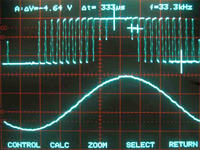Prince Vegeta
Member level 5

I want to design a solar inverter that outputs 220v AC voltage @ 50Hz freq. without batteries.
Does anyone have any idea how that's done?
Our design was like 40v input boost that outputs 220v DC voltage then 50Hz inverter which makes it 220v/50Hz signal.
The inverter doesn't need control, just 50% duty PWM by Compare module in PIC18 was enough. Boost, however, needs to be config and control to maintain 220v output...
Now my question, how can I implement MPPT in this design? using P&O algorithm in MPPT will make Boost's output voltage varies and by this the inverter will never output 220v AC... How can I generate 220v AC in this situation?
for stuff like push-pull, flyback... I don't know about them so I ask u.
I need help to decide which thing to do to have 220v/50Hz AC with MPPT from a solar panel. ( I need it to be 220v cuz the project should run an airconditioner that works at 220v/50Hz AC)
Does anyone have any idea how that's done?
Our design was like 40v input boost that outputs 220v DC voltage then 50Hz inverter which makes it 220v/50Hz signal.
The inverter doesn't need control, just 50% duty PWM by Compare module in PIC18 was enough. Boost, however, needs to be config and control to maintain 220v output...
Now my question, how can I implement MPPT in this design? using P&O algorithm in MPPT will make Boost's output voltage varies and by this the inverter will never output 220v AC... How can I generate 220v AC in this situation?
for stuff like push-pull, flyback... I don't know about them so I ask u.
I need help to decide which thing to do to have 220v/50Hz AC with MPPT from a solar panel. ( I need it to be 220v cuz the project should run an airconditioner that works at 220v/50Hz AC)




